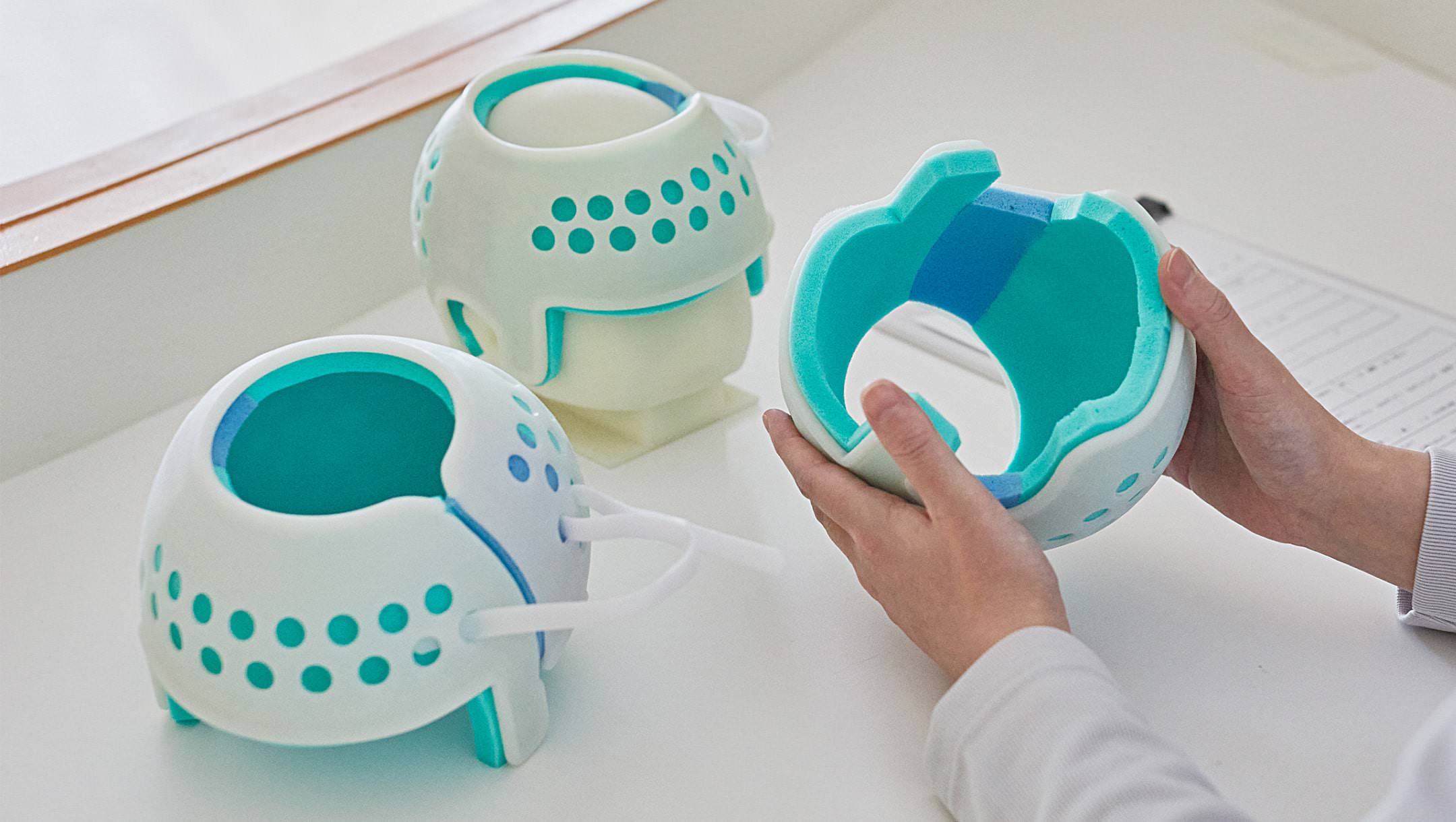



Distortion in a baby’s head is mainly caused by external pressure arising from positioning habits and other factors. However, in rare cases, pathological deformations such as craniosynostosis may be the cause. Accurately identifying these conditions is difficult, so early diagnosis/testing/treatment by specialist doctors is required.
Distortion in a baby’s head is roughly divided into three types: “plagiocephaly,” “brachycephaly,” and “scaphocephaly.” Whether helmet treatment is necessary or not is determined not by the shape but by the intensity and cause of the distortion.
“Plagiocephaly” caused by positioning habit etc.
A condition where the back of the head is diagonally asymmetrical. Causes include positioning habits during sleep/breastfeeding (to right/left) and restrictive intrauterine environments.
“Brachycephaly,” so-called a “flat head”
A condition where the back of the head is flat instead of rounded. It is often called “a precipice head.” Lying face up is said to be the main cause.
“Scaphocephaly” caused by lying on one side
A condition where the back of the head protrudes prominently. Lying on one side is the main cause. Scaphocephaly displays similar characteristics to those of pathological deformations, so early diagnosis by a doctor is needed.
“Plagiocephaly” caused by positioning habit etc.
A condition where the back of the head is diagonally asymmetrical. Causes include positioning habits during sleep/breastfeeding (to right/left) and restrictive intrauterine environments.
“Brachycephaly,” so-called a “flat head”
A condition where the back of the head is flat instead of rounded. It is often called “a precipice head.” Lying face up is said to be the main cause.
“Scaphocephaly” caused by lying on one side
A condition where the back of the head protrudes prominently. Lying on one side is the main cause. Scaphocephaly displays similar characteristics to those of pathological deformations, so early diagnosis by a doctor is needed.

Check whether a pathological head deformation (craniosynostosis) is present.
When the distortion is confirmed to be not a pathological skull deformation, measure the shape of the head using a 3D scanner to determine the seriousness. Then, it is determined whether helmet treatment is needed.
* A guardian asking for helmet treatment is requested to sign a consent form.
Manufacture a made-to-order helmet based on the shape of the current head and anticipated shape after treatment.
Two weeks after initial treatment, wearing of the helmet starts. It is recommended that the patient wear it 23 hours a day for around 6 months to 1 year (duration may vary from person to person).
Checkups are performed every 2 to 4 weeks to fine-tune the helmet.
A specialist doctor judges the timing for ending treatment. The extent of closure in the “anterior fontanelle” which is a gap between the bones of the skull is a rough indicator, as well as the timing when the skull starts to harden.